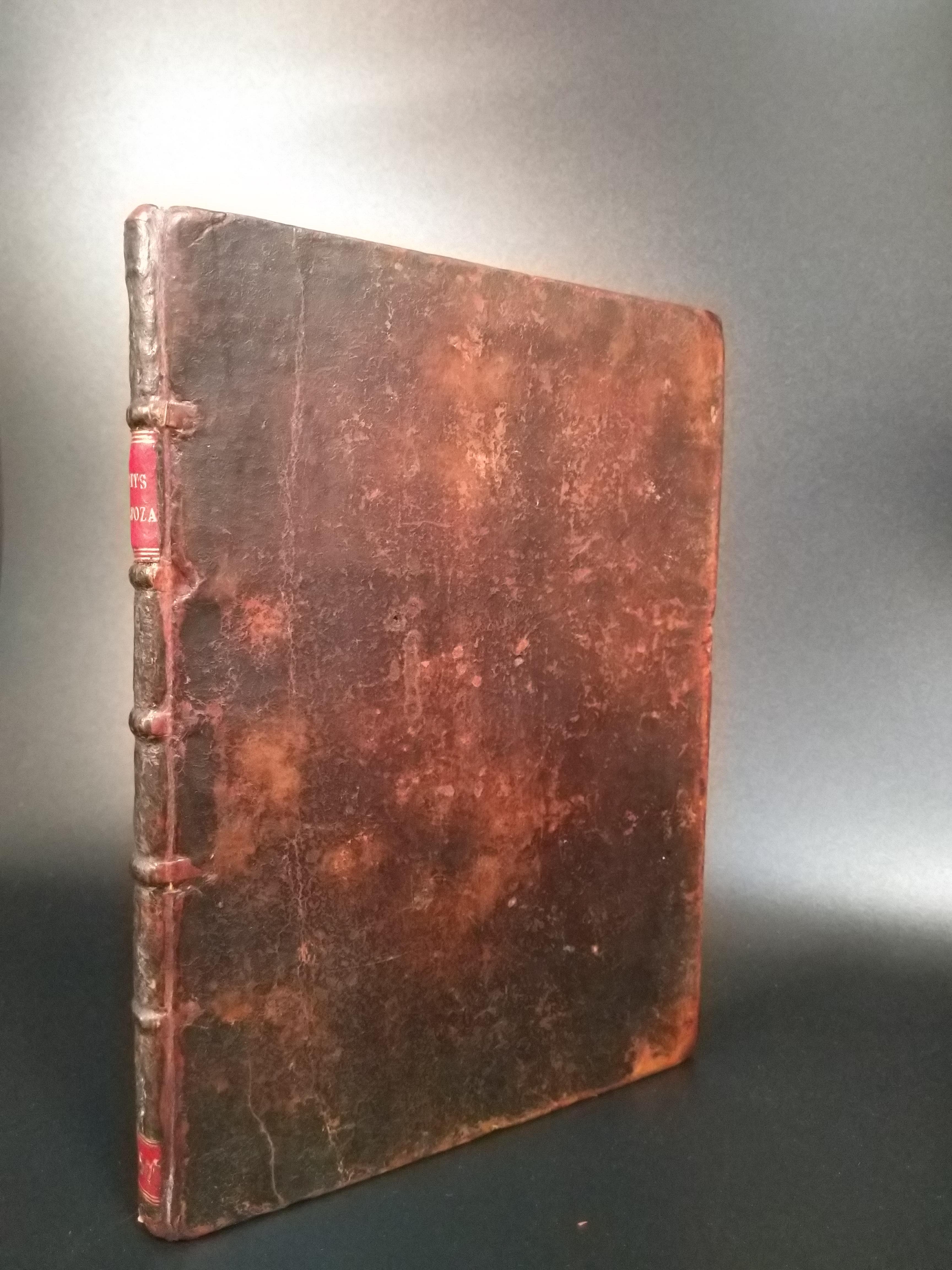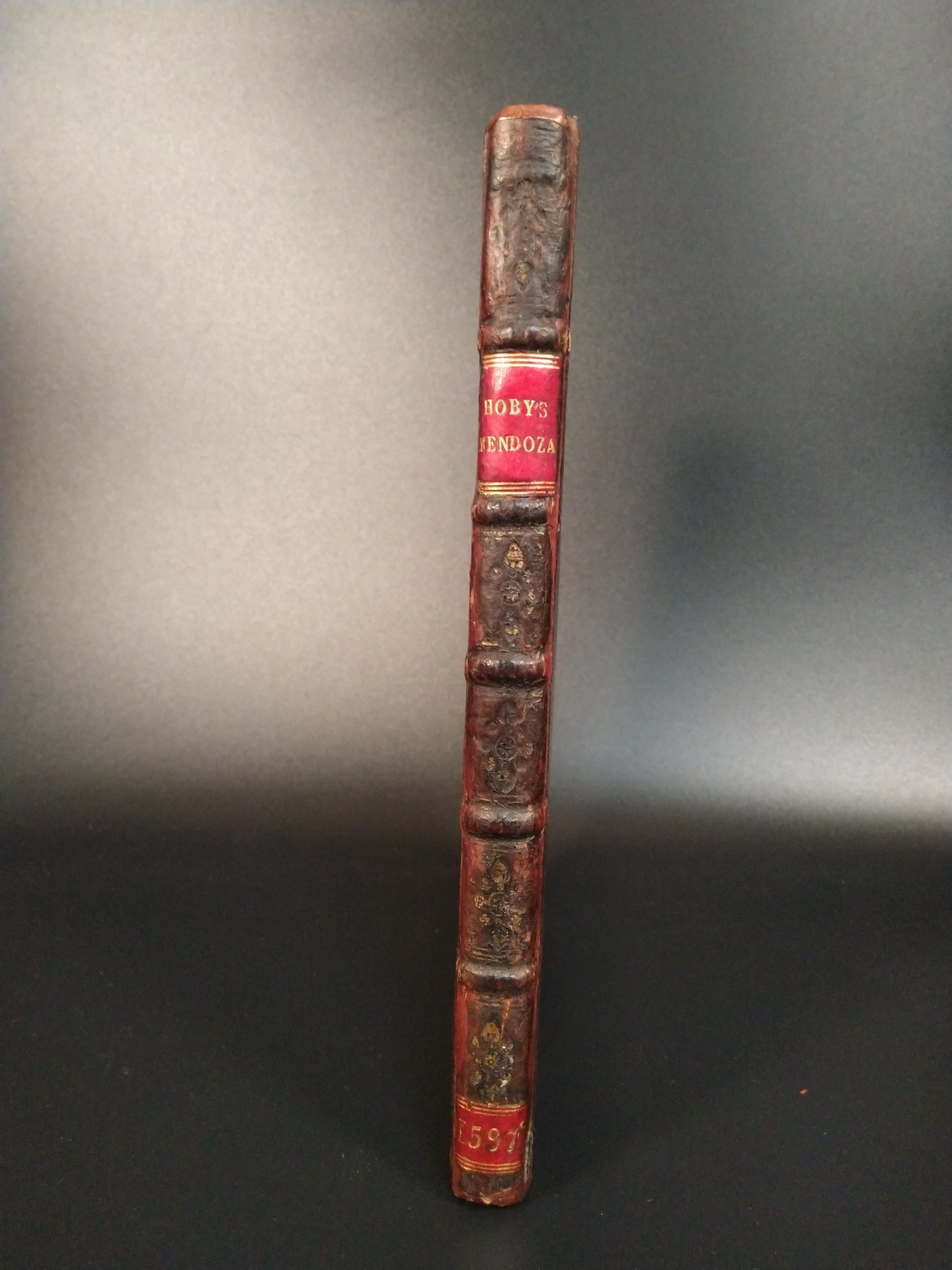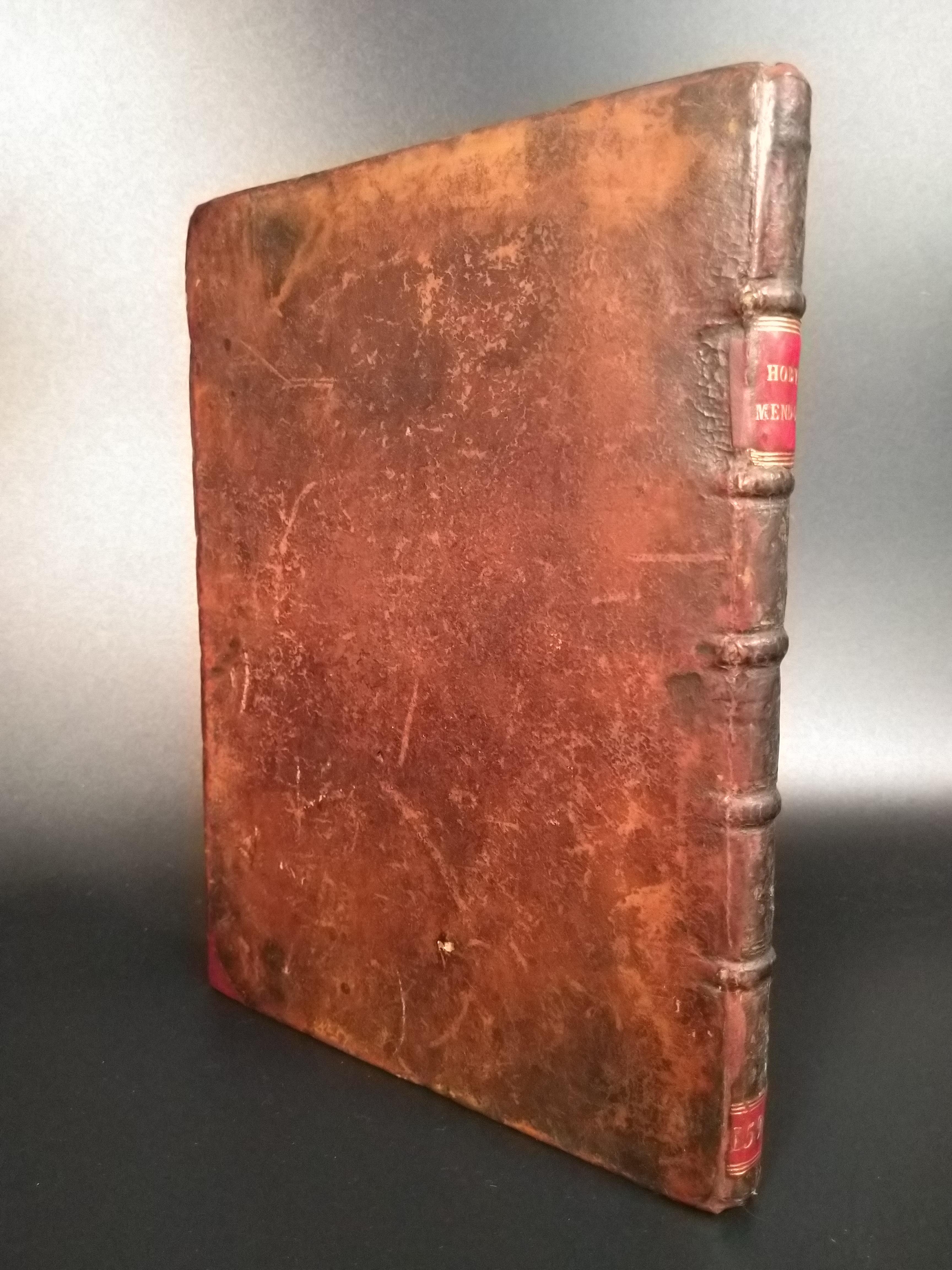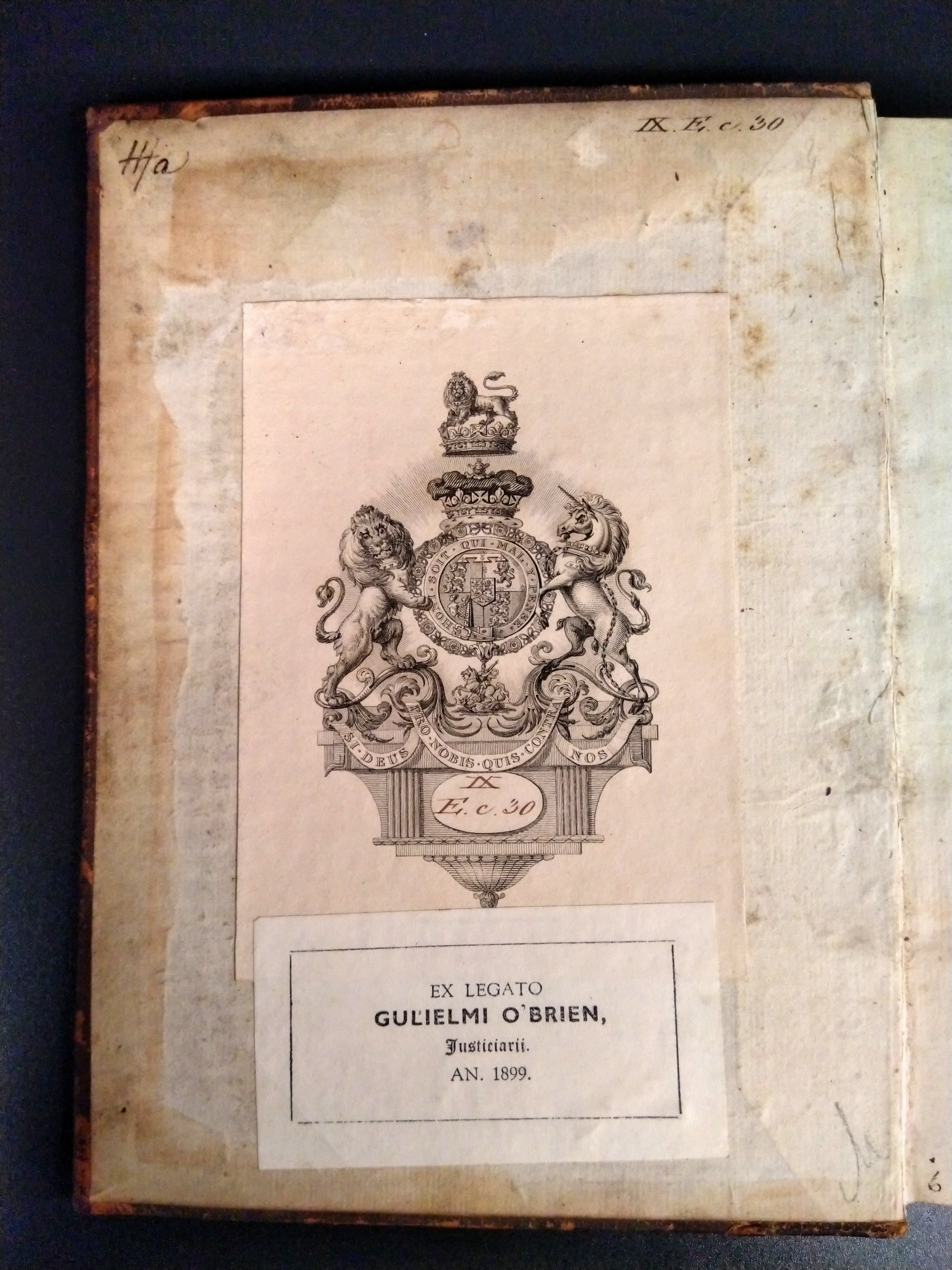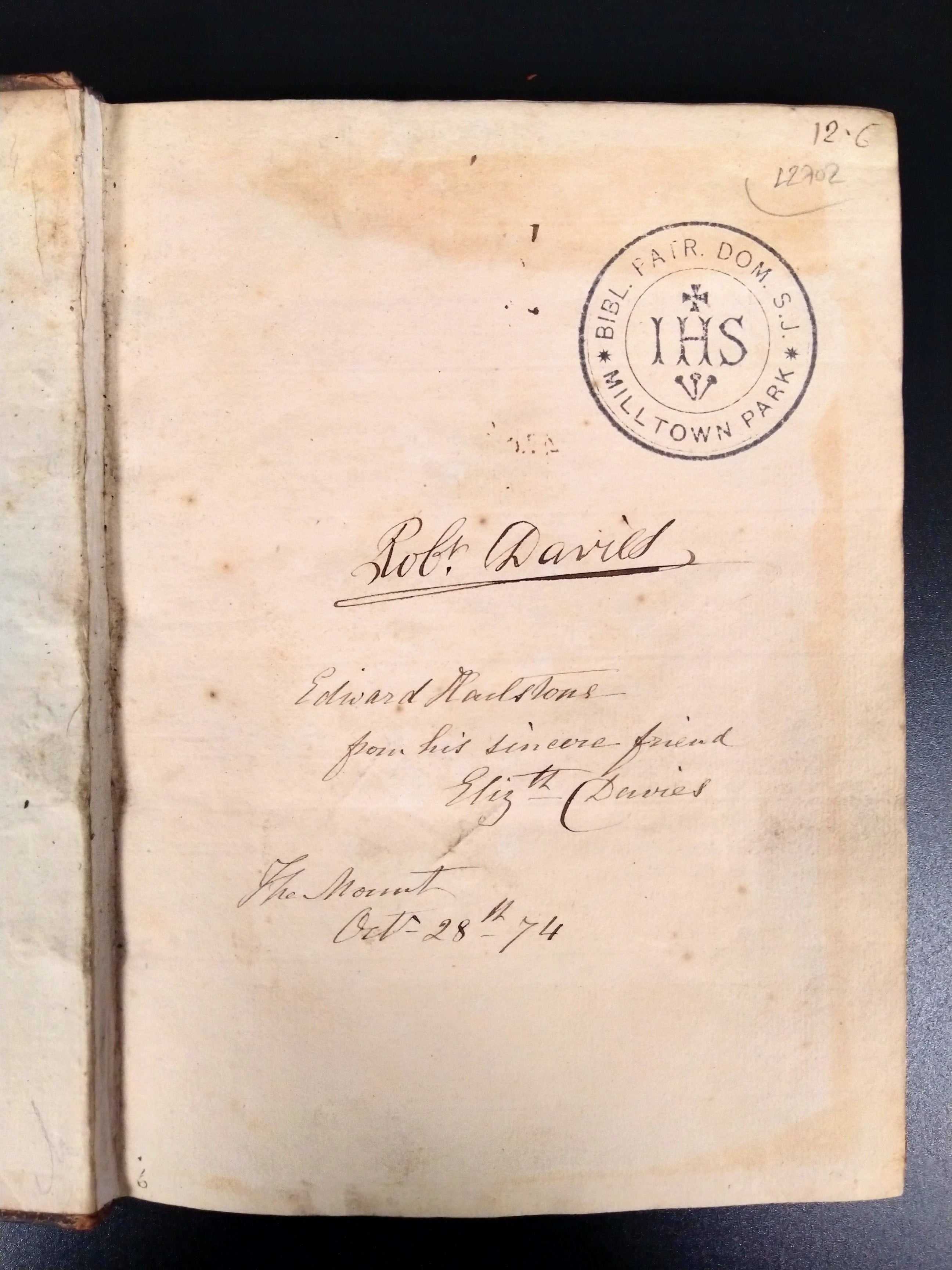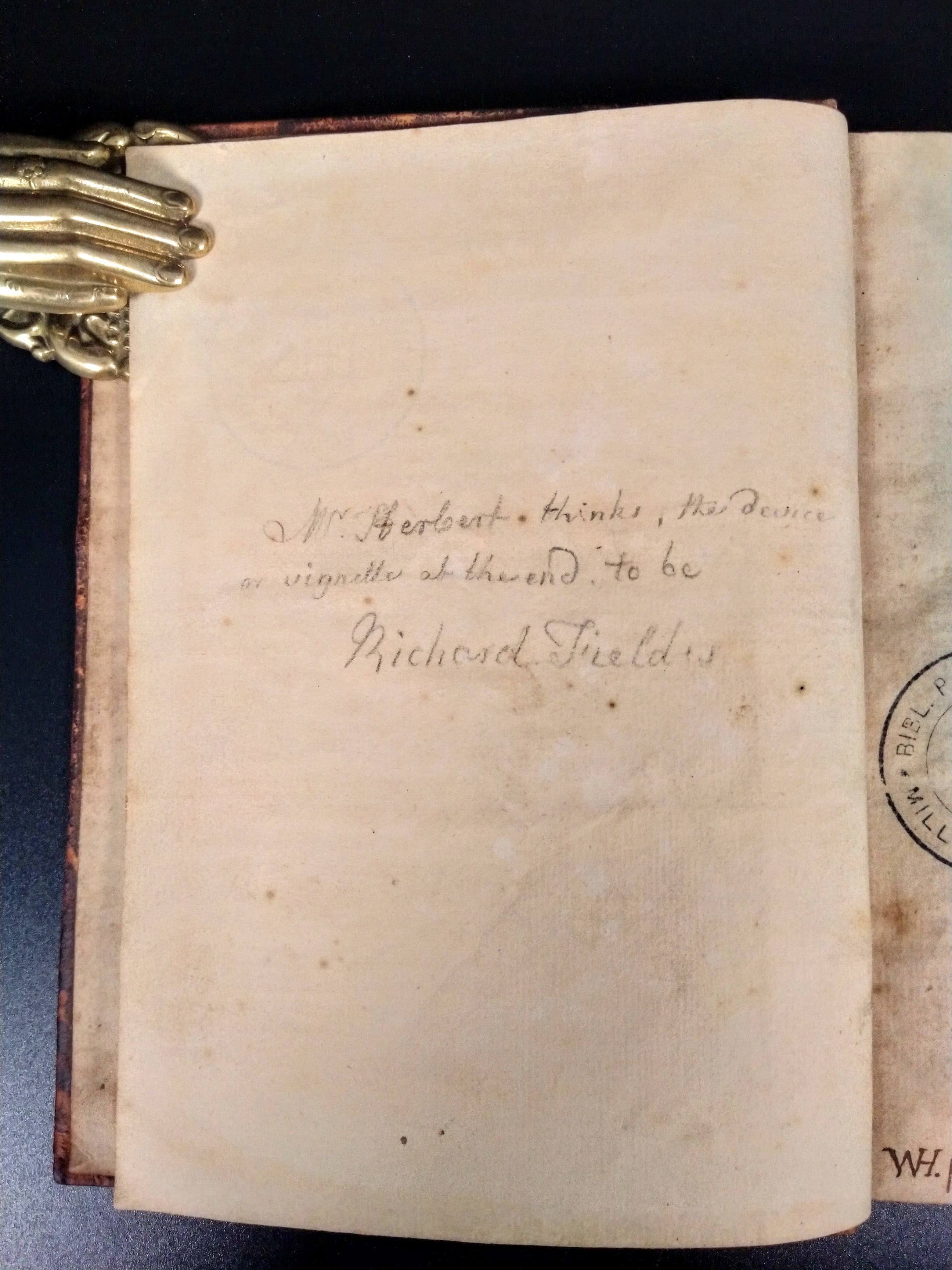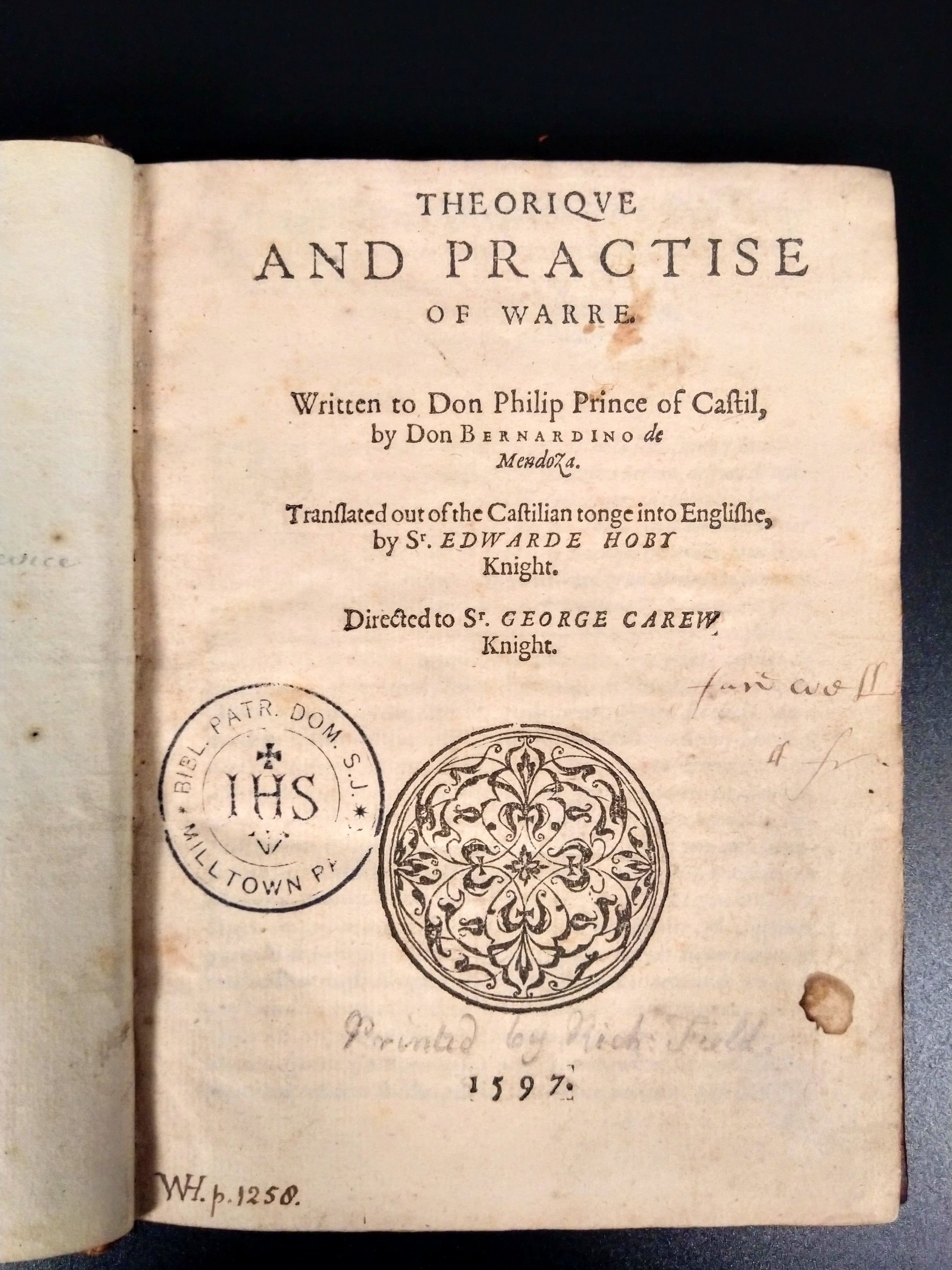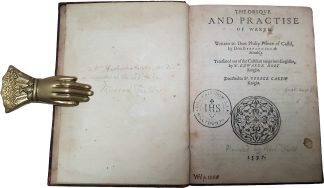MENDOZA, Bernardino de
Theorique and practise of warre
[Middelburg, Printed by Richard Schilders], 1597£12,500.00
FIRST EDITION thus. 4to. pp. [viii], 165, [iii]. [A-Y .] Roman letter. Large round woodcut ornament on title, historiated and white on black criblé initials, large grotesque tail-pieces, typographical head-piece. Contemporary English autograph on t-p with price below, Manuscript monogram of William Herbert (1718-1795) with page reference to his augmented edition of Ames’ Typographical antiquities, at foot of t-p, engraved armorial bookplate of the Duke of Sussex (1773-1843) with his ms shelf mark, autograph of Robert Davies on fly, Elizabeth Davies’ ex dono inscription to Edward Hailstone (1818-1890) below, his gilt armorial leather book label on rear pastedown, William O’Brien’s ex legato label dated 1899, stamp of Milltown Park library on fly, repeated on t-p. Light age yellowing, t-p fractionally dusty, minor mostly marginal spotting in places, small water-stain in upper outer corner of a few leaves at end, the odd mark or spot. A very good copy in English C17th calf, spine with raised bands gilt ruled in compartments with small gilt fleurons, later gilt lettered red morocco author and date labels, spine rubbed, joints and corners expertly restored, all edges sprinkled red.
Exceptionally rare first edition of the English translation of Mendoza’s guide to military strategy by Sir Edwarde Hoby, first published in Madrid in 1577 and rewritten for an edition of 1595, as a guide for the future Phillip III. The work begins as a treatise on government. Mendoza explains the offices and shapes of armies and exhorts the prince both to behave as one (he ironically owes much here to Castiglione’s ‘Courtier’) to take appropriate care and consideration in his decisions, with especial regard to defence in times of peace. The author had recently written a study of the Duke of Alva’s campaigns in the Low Countries, published in 1592, and was certainly brought close to military thinking in his brilliant diplomatic career, as ambassador to England for 10 years until the execution of Mary Queen of Scots (an event he refers to obliquely) and orchestrator of the pro-Spanish ‘Ligue’ in France, which he ended by arranging the marriage of Henry IV to Phillip III’s sister. “The Author who had served in the Netherlands under Alva, gives a clear and succinct account of the generals system. In an interesting passage on cavalry, he pronounces for the lance against the pistol, and describes the manner of handling the former arm Mendoza was the inventor of a piece of artillery made of metal, firing a shot of one pound weight, which he says would pierce a two foot wall; but neither the range or the charge is given. pp. 82-147 are on seiges; pp. 148-165 on naval matters.” Cockle
“For Hoby, Guise was the epitome of the Renaissance general…. We might wonder whether Hoby’s intended audience appreciated the subtleties of his account of Guise’s efforts at Calais, but Hoby himself was certainly aware of contemporary debates over the nature of effective military command. Two years after translating La Popelinière’s ‘Histoire’ he dedicated a translation of Bernardino de Mendoza’s ‘Theorique and practise of warre’, a treatise providing a first-hand account of the war in the Low Countries between 1567 and 1577, to his fellow Middle Temple Lawyer, Sir George Carew. Hoby served on diplomatic missions to Scotland and the continent, sat in the House of Commons and served as constable of Queenborough castle in Kent. His only recorded military experience was to accompany the Earl of Essex on the Cadiz expedition in 1596… Hoby’s translation points to a new desire for objective, rational histories. .. This desire presumably overrode the potential objections that La Popelinère had been accused by Hugenots of a being a pro Catholic writer and the siege of Calais and the achievements of the Guise were not suitable subjects to be celebrated in English.” Joanna Bellis. ‘Representing War and Violence: 1250-1600.’
With exceptional provenance. From the library of the celebrated English bibliographer and collector William Herbert; “his edition of the ‘Typographical Antiquities’ increased three times the size of the original of Ames. The unfinished edition of Dibdin has not superseded it, and it remains a monument of industry, and the foundation of our bibliography of old English literature.” DNB.
ESTC S112647. STC 17819. Cockle 67. Ames. III 1258.In stock







